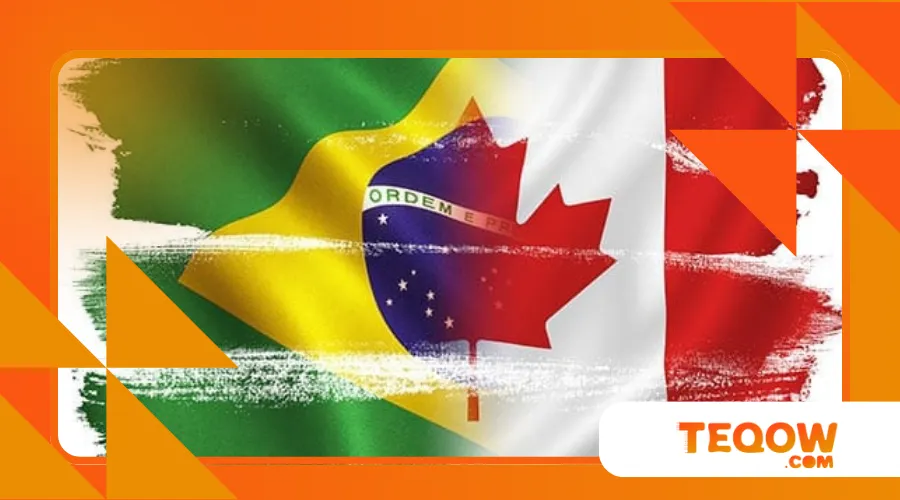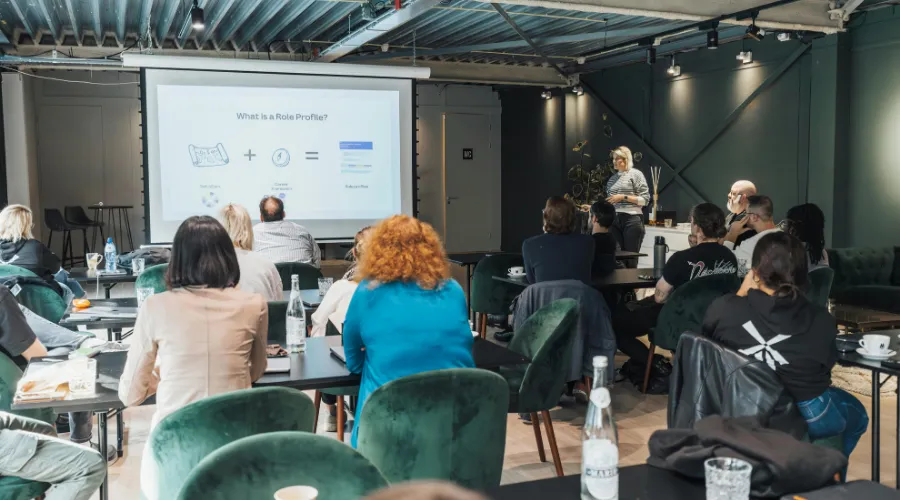Brazil-Canada Partnership Offers 25K Vocational Training Slots

In a groundbreaking move, the Brazil-Canada partnership has unveiled 25K vocational training slots, a transformative initiative poised to reshape workforce development across both nations.
This ambitious collaboration, rooted in shared values of innovation and economic progress, aims to equip young professionals with cutting-edge skills to thrive in a rapidly evolving global market.
By blending Brazil’s vibrant labor force with Canada’s world-class educational frameworks, this program isn’t just a policy win—it’s a beacon of hope for thousands aspiring to secure meaningful careers.
Why should we care about this transcontinental alliance? Because it’s a model for how nations can unite to tackle the skills gap head-on.
This article dives into the mechanics of this partnership, its strategic importance, and its potential to redefine vocational training.
From economic ripple effects to cultural exchange, we’ll explore why these 25K vocational training slots are more than just numbers—they’re a catalyst for change.
A Strategic Alliance Born of Necessity
The world of work is changing faster than ever.
Automation, artificial intelligence, and green technologies demand a workforce that’s adaptable and skilled.
Brazil, with its youthful population and booming industries like agribusiness and renewable energy, faces a pressing need to upskill its labor force.
Canada, renowned for its robust vocational education systems and tech-driven economy, is an ideal partner.
Together, they’ve crafted a program that offers 25K vocational training slots to bridge the gap between ambition and opportunity.
This partnership didn’t emerge in a vacuum.
It’s a response to global labor market trends.
According to a 2023 report by the International Labour Organization, 60% of the global workforce lacks access to quality vocational training, creating a bottleneck for economic growth.
By targeting this issue, Brazil and Canada are setting a precedent.
The program focuses on high-demand sectors like clean energy, digital technology, and advanced manufacturing, ensuring participants are primed for jobs that exist today and those emerging tomorrow.
Consider the story of Ana, a 22-year-old from São Paulo.
She dreams of working in Brazil’s growing wind energy sector but lacks the technical know-how.
Through this initiative, Ana could access a Canadian-designed course on turbine maintenance, blending online modules with hands-on training in Brazil.
Her story illustrates the program’s potential to transform individual lives while fueling industry growth.
+ New Rules for Hiring Foreign Workers in Canada Take Effect
Economic Impacts: A Win-Win for Both Nations
The economic implications of these 25K vocational training slots are profound.
For Brazil, the program promises to boost productivity and attract foreign investment.
Skilled workers are a magnet for multinational corporations, and a better-trained workforce could increase Brazil’s GDP by an estimated 1.2% annually, per a 2024 study by the Brazilian Institute of Economics.
For Canada, the partnership opens doors to Brazil’s vast market, fostering trade in educational services and technology.
Here’s a snapshot of the economic benefits:
| Country | Key Economic Benefit | Projected Impact by 2030 |
|---|---|---|
| Brazil | Increased workforce productivity | $15B GDP growth |
| Canada | Expanded educational exports | $2.5B in trade revenue |
This table underscores the mutual gains.
Brazil’s investment in human capital strengthens its industrial base, while Canada’s expertise in vocational training becomes a valuable export.
It’s like a well-choreographed dance: each partner moves in sync, creating something greater than the sum of their steps.
Beyond economics, the program fosters resilience.
By equipping workers with adaptable skills, both nations are better prepared for disruptions like technological shifts or trade uncertainties, such as the U.S. tariffs looming in 2025.
This initiative isn’t just about jobs—it’s about future-proofing economies.

Cultural Exchange: Building Bridges Through Skills
Skills training isn’t just about technical know-how; it’s about forging connections.
The 25K vocational training slots will facilitate cultural exchange, as Brazilian trainees engage with Canadian instructors and curricula.
This cross-pollination of ideas strengthens bilateral ties and fosters mutual understanding.
Imagine a Canadian trainer teaching a cohort in Recife about sustainable forestry, while Brazilian trainees share insights on biodiversity.
It’s a two-way street that enriches both sides.
Take the example of Lucas, a Canadian instructor specializing in cybersecurity.
Through this program, he travels to Brasília to lead a workshop, immersing himself in Brazil’s vibrant culture while imparting skills that protect against digital threats.
His students, in turn, bring perspectives that challenge his assumptions, sparking innovation.
Such interactions humanize the partnership, making it more than a bureaucratic agreement.
This cultural dimension also counters the narrative of isolationism.
In an era where global tensions—think U.S.-China trade spats or Canada’s strained ties with certain powers—threaten collaboration, this program is a reminder that nations can unite for shared goals.
It’s a small but powerful antidote to division.
For more insights on the importance of cultural exchange, you can visit Cultural Survival.
Program Structure: How It Works
So, how do these 25K vocational training slots actually function?
The program is a hybrid model, blending online learning with in-person training.
Canada provides the curriculum, leveraging its expertise in competency-based education, while Brazil supplies infrastructure and local expertise.
Courses span 6 to 18 months, targeting youth aged 18–30, with a focus on underrepresented groups like women and Indigenous communities.
Here’s a breakdown of the program’s key components:
| Component | Details |
|---|---|
| Curriculum | Designed by Canadian institutions, tailored to Brazilian industry needs |
| Delivery | 70% online, 30% in-person at training centers in Brazil |
| Sectors | Clean energy, IT, manufacturing, healthcare |
| Accessibility | Subsidized for low-income participants, with scholarships for 20% of slots |
This structure ensures scalability and inclusivity.
By prioritizing digital platforms, the program reaches remote areas, like Brazil’s Amazon region, where traditional training is scarce.
The focus on equity—reserving spots for marginalized groups—sets a high standard for social impact.

++ Canada Pension Plan (CPP) Payments Scheduled for April 28
Challenges and Criticisms: Addressing the Skeptics
No initiative is without hurdles.
Critics argue that 25K vocational training slots, while significant, are a drop in the bucket for Brazil’s 200 million-plus population.
Others question whether Canada’s curricula will translate effectively to Brazil’s diverse contexts.
These are valid concerns, but they don’t overshadow the program’s potential.
To address scale, the partnership includes a phased rollout, with plans to expand to 100K slots by 2030 if initial results are strong.
On cultural fit, pilot programs in 2024 showed that Canadian frameworks, when co-designed with Brazilian educators, resonate well.
The key is flexibility—allowing local adaptations while maintaining rigor.
There’s also the question of funding.
Brazil’s fiscal constraints and Canada’s domestic priorities could strain resources.
Yet, both governments have committed $500 million over five years, supplemented by private-sector contributions from companies like Vale and Shopify.
This public-private model mitigates financial risks and aligns training with industry needs.
The Bigger Picture: A Model for Global Collaboration
What makes these 25K vocational training slots truly exciting is their potential as a blueprint.
Other nations, from India to Mexico, face similar skills gaps.
By demonstrating how two countries with different economies and cultures can collaborate, Brazil and Canada are charting a path others can follow.
It’s like planting a seed: with care, it could grow into a forest of opportunity.
The program also aligns with global goals, like the UN’s Sustainable Development Goal 4 (quality education).
By prioritizing green skills, it supports climate goals, too.
In a world grappling with inequality and environmental crises, initiatives like this offer a rare blend of pragmatism and optimism.
Engaging the Future: What’s at Stake?
As we look to 2025 and beyond, the stakes couldn’t be higher.
Will we invest in people, equipping them to shape a better future, or let the skills gap widen, leaving millions behind?
The Brazil-Canada partnership, with its 25K vocational training slots, is a resounding vote for the former.
It’s a call to action for governments, businesses, and individuals to prioritize education as the cornerstone of progress.
This initiative isn’t perfect, but it’s bold.
It’s a reminder that collaboration, not competition, drives meaningful change.
For Ana in São Paulo, Lucas in Brasília, and thousands more, these 25K vocational training slots aren’t just opportunities—they’re lifelines to a brighter, more inclusive future.
And that’s a story worth telling.
